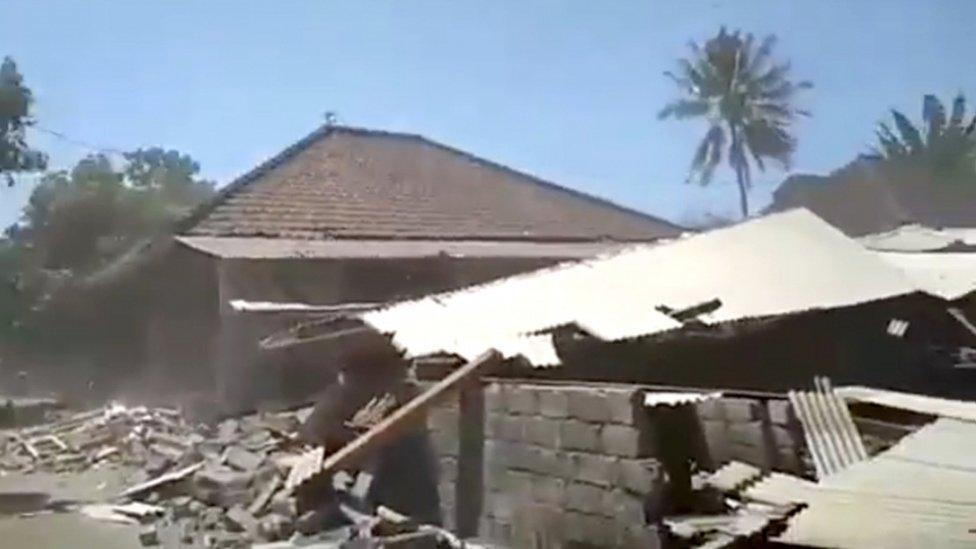Indonesia earthquake and tsunami: Desperate search for survivors
- Published
Indonesia quake looter: "We need to eat"
A picture of large-scale destruction is emerging in and around the Indonesian city of Palu after an earthquake and tsunami struck on Friday.
At least 844 people are confirmed to have died but that figure is expected to rise sharply as more remote areas are reached.
The authorities have said they will begin burying victims in mass graves, fearing disease could begin to spread.
Dozens of people are thought to be trapped alive under the rubble.
In Palu, rescuers are awaiting heavy machinery to search the ruins of a hotel and a shopping centre as aftershocks made it unsafe for them to go in.
"Communication is limited, heavy machinery is limited... it's not enough for the numbers of buildings that collapsed," said Sutopo Purwo Nugroho, spokesman for the National Disaster Mitigation Agency.
A tsunami warning had been issued after the magnitude-7.5 earthquake hit on Friday, but it is unclear whether it was still in place when the waves hit.
Videos show people screaming as 6m-high waves power over the beach - where a festival was being set-up - sweeping up everything in their path.
Indonesian President Joko Widodo visited the region to urge a "day and night" effort to rescue survivors.
Mr Widodo has also agreed to accept international help for disaster response and relief, Thomas Lembong, the head of the Indonesian investment board said on Twitter on Monday.
Meanwhile, Indonesia's justice ministry is reporting that 1,200 convicts escaped from three different detention facilities in the Sulawesi region following the earthquake and tsunami.
Allow X content?
This article contains content provided by X. We ask for your permission before anything is loaded, as they may be using cookies and other technologies. You may want to read X’s cookie policy, external and privacy policy, external before accepting. To view this content choose ‘accept and continue’.


Patients and corpses side by side
By Rebecca Henschke, BBC News, Palu
Lying on a stretcher in the dark outside the Mamboro health clinic in Palu is a five-year-old girl with a broken leg. She was found alone, Doctor Sasono tells me. "We don't know where her family is and she doesn't remember where they live." His clinic has no power and is running out of medical supplies.
A few metres from her stretcher bed are rows of bodies in bags. The smell of decomposition fills the air. Dr Sasono says they will be buried in mass graves to stop the spread of diseases: "They are starting to smell. We want to wait for relatives to pick them up, but we can't wait any longer."
Rows of rubble lie all along the shoreline where vibrant fishing villages once stood.
People's possessions lie smashed together, with cars and boats tossed around by the massive waves. Amid the rubble are tents where families are sleeping out in the open.

How difficult is the rescue work?
Blocked roads, a damaged airport and broken telecommunications have made it difficult to bring help into the affected area, and impossible to contact more remote regions.
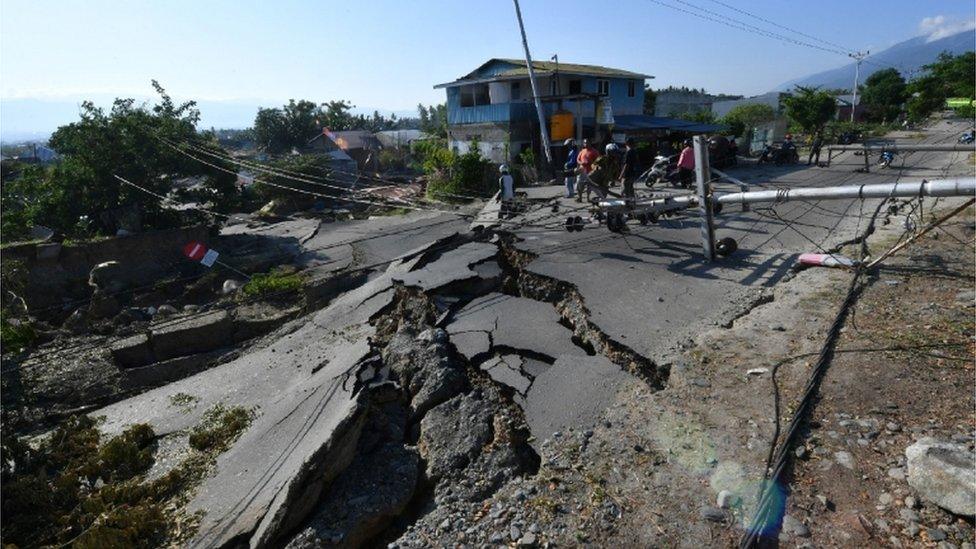
Roads crumbled as the ground underneath gave way
"We don't know for sure what is the impact," said Mr Nugroho.
Local media report that mobile phone signals have been detected in the rubble of the shopping mall in Palu, and shouts have been heard under the debris of the Roa Roa Hotel.
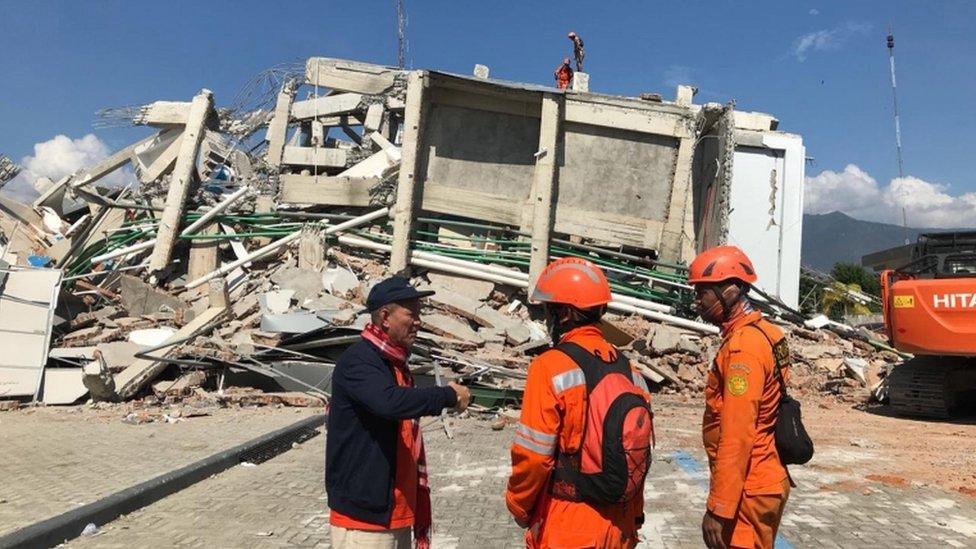
Dozens of people were known to be inside the Roa Roa hotel
One volunteer, Thalib Bawano, told AFP news agency that three people had been rescued from the hotel rubble, where more than 50 people may be trapped.
"We also heard voices at several points, including a child," he said.
"They were asking for help, but they are still there till now. We gave them motivation... so they can have spirit because they are trapped between life and death."
"We gave them water and food but that's not what they wanted. They wanted to get out. 'We want to get out, out, out. Help! Help!' they kept screaming. That's what we heard. Some were just knocking."
What are the other challenges?
In Palu, people have been sleeping in the open, wary of returning to their homes, even if they are still intact.
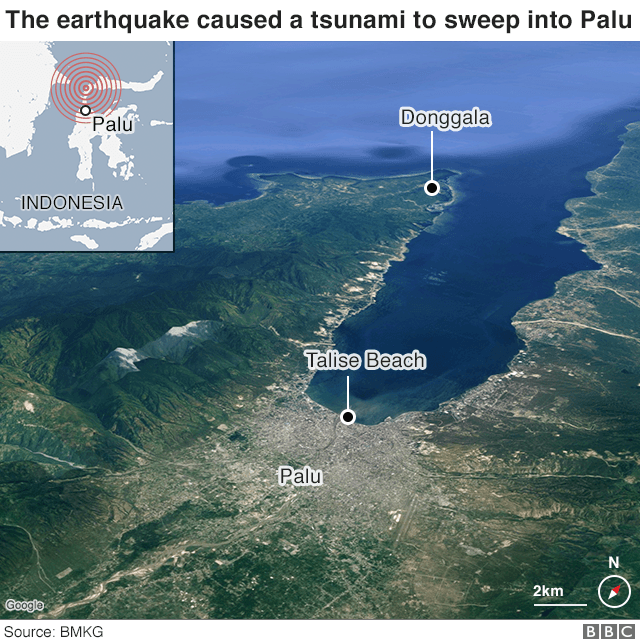

With hospitals damaged, injured people have been treated in the open and at least one military field hospital has been set up.
The military has taken over the airport to fly aid in, and injured people and other evacuees out.
"What you'll see, you know, as the days go by and people don't have access to adequate hygiene supplies, shelter, you'll see the situation deteriorate if they don't get that access so, we've sent shelter kits," Tom Howells, programme director for Save The Children, said on Sunday.

Military aircraft have been evacuating some of the injured
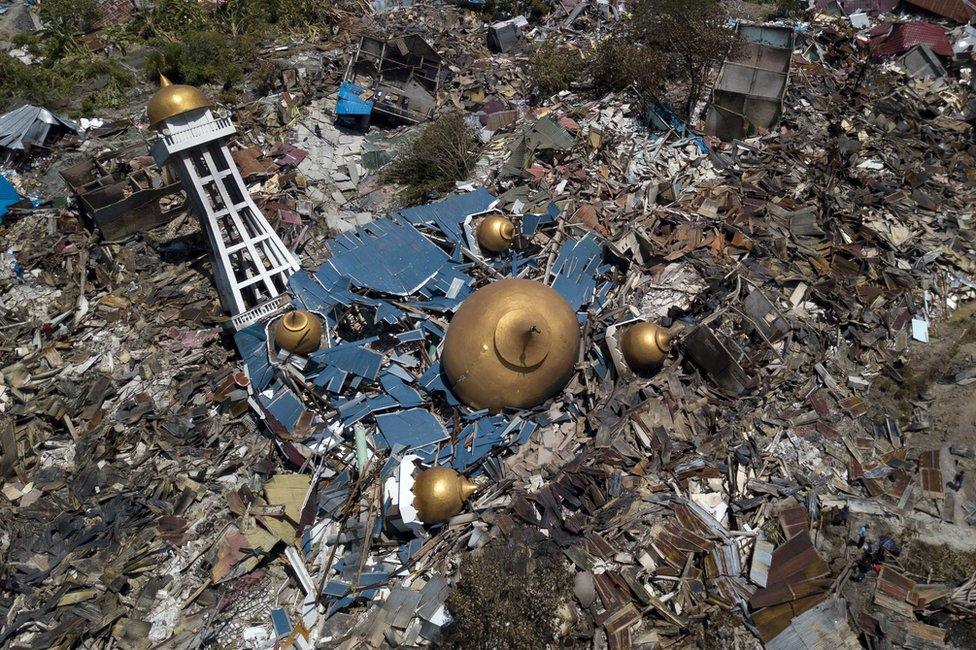
A shattered mosque in Palu
With supplies limited, people have been raiding damaged shops for food, water and medicine.
"We don't have any other choice, we must get food," one man told AFP.
Meanwhile mass graves are being dug, one of them for up to 300 bodies.
Why was the tsunami so destructive?
The 7.5-magnitude quake occurred at a depth of 10km (6.2 miles), external just off the central island of Sulawesi at 18:03 (10:03 GMT) on Friday, setting off a tsunami, US monitors say.


The earthquake was powerful but shallow and with more lateral than vertical movement, not typically the kind of tremor that sets off tsunamis.
Vice-President Jusuf Kalla has said the final death toll could be in the thousands while the Red Cross estimates that more than 1.6 million people have been affected.
A sophisticated tsunami warning system was put in place across the whole Pacific region after the 2004 disaster, which killed nearly a quarter of a million people.
It remains unclear why it was not effective this time, but Mr Nugroho said Indonesia's part of the network has suffered from a lack of funding.
- Published30 September 2018
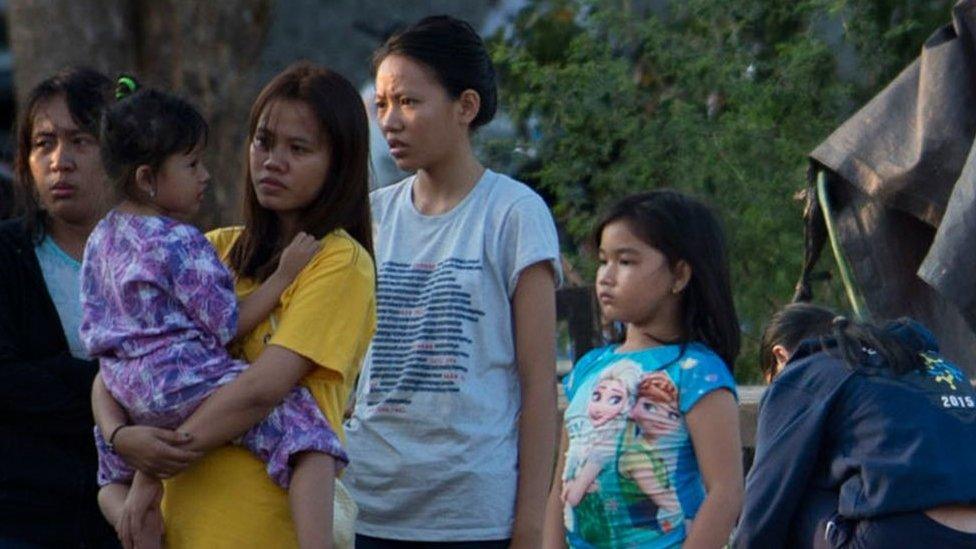
- Published19 August 2018
